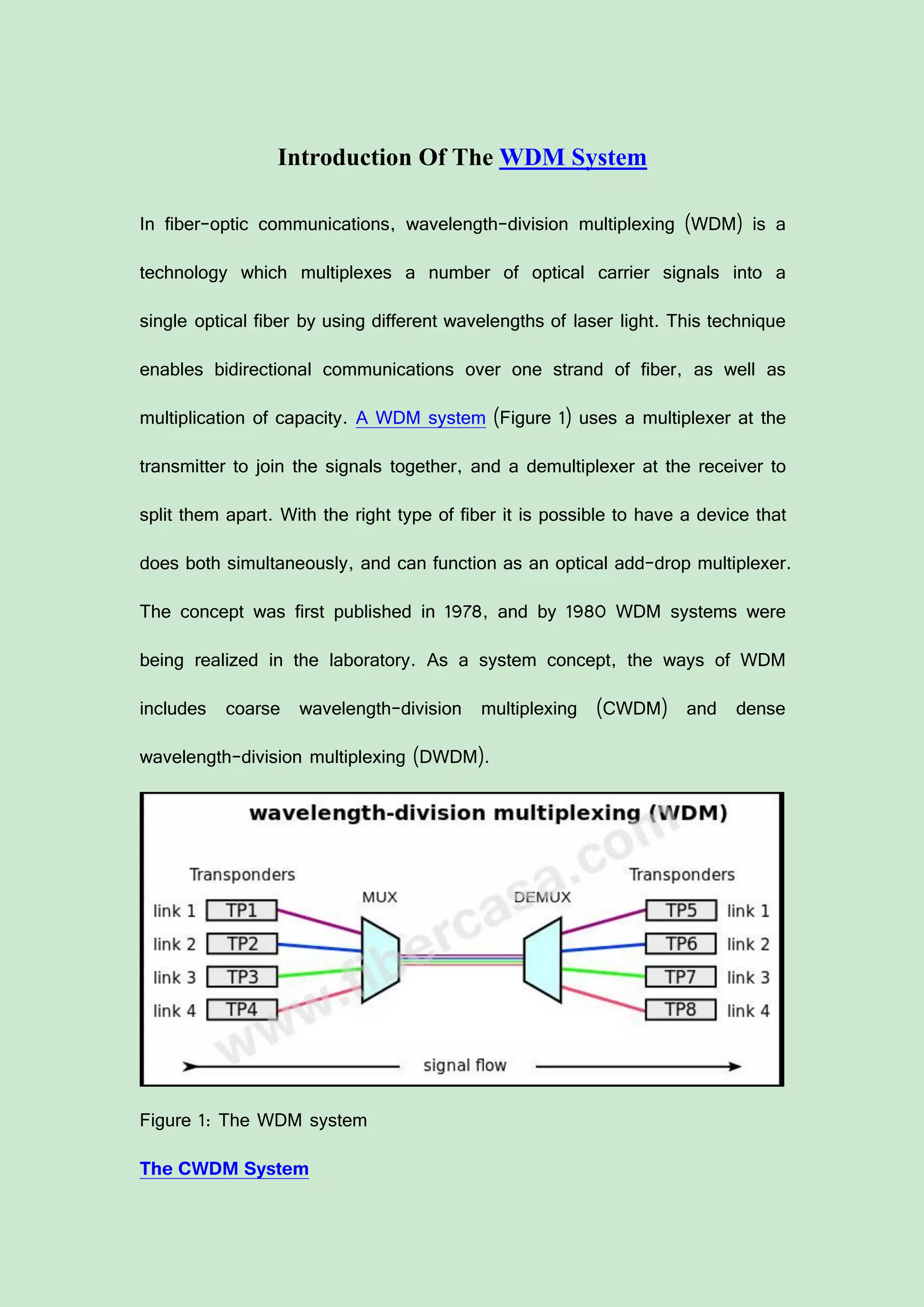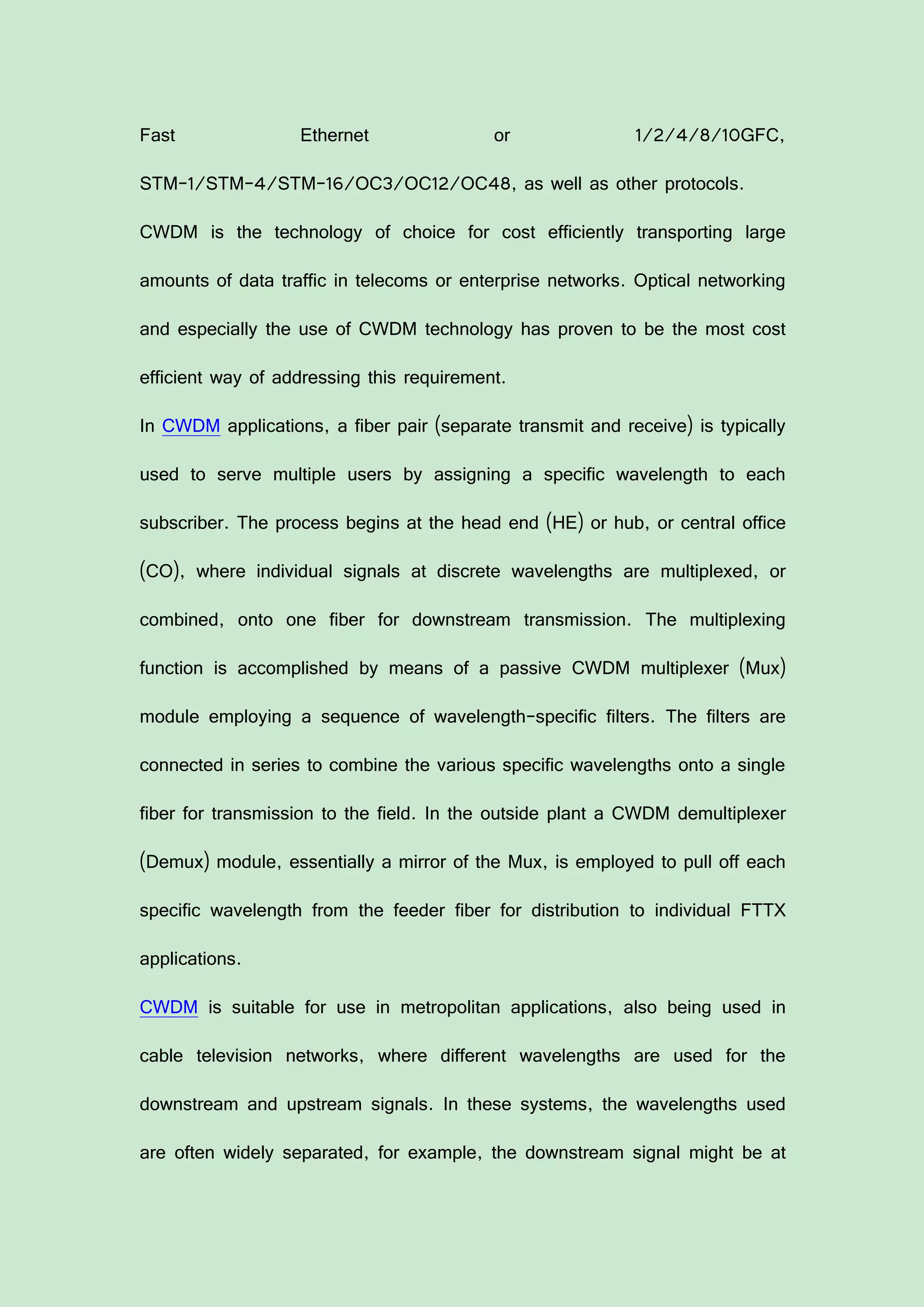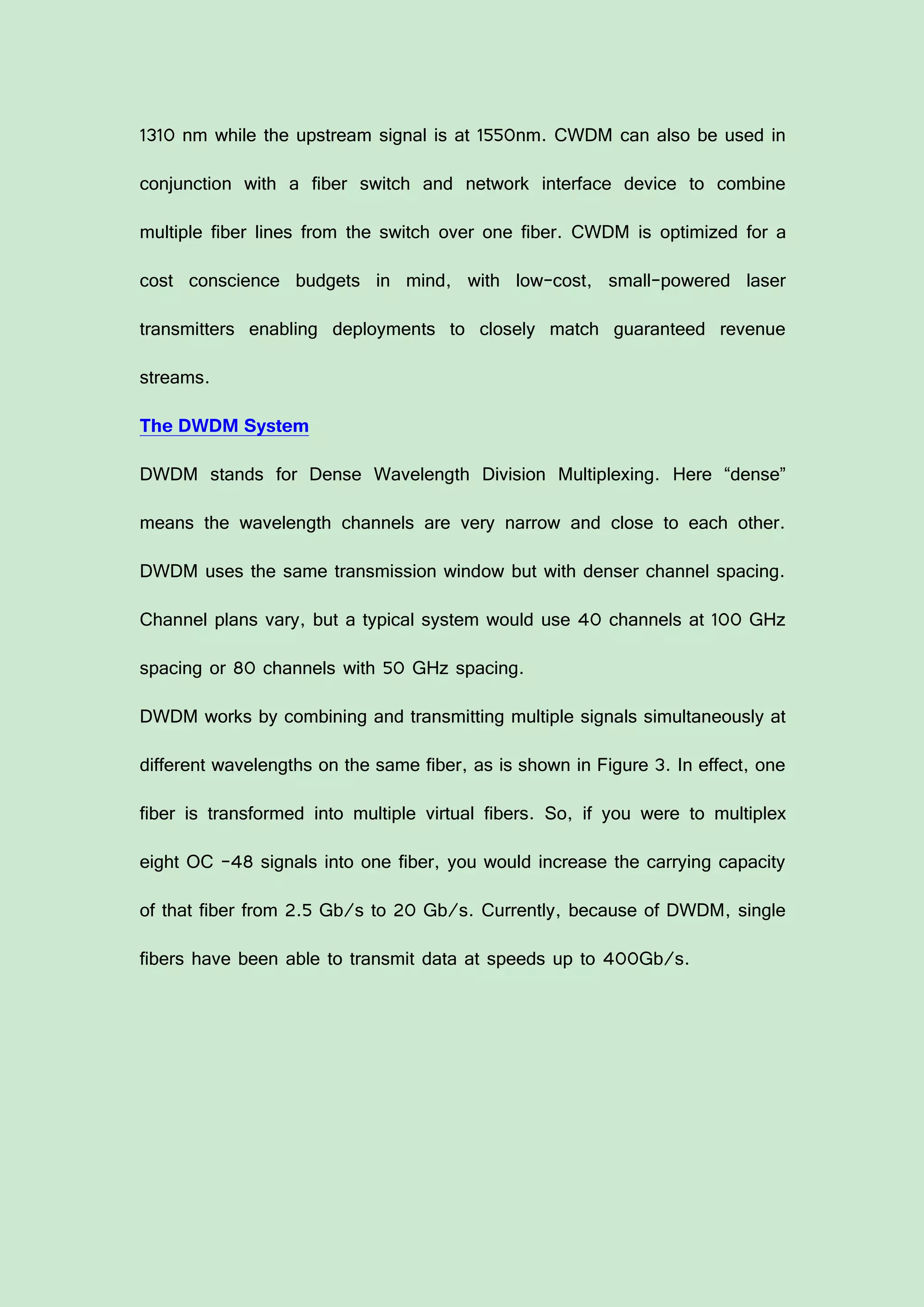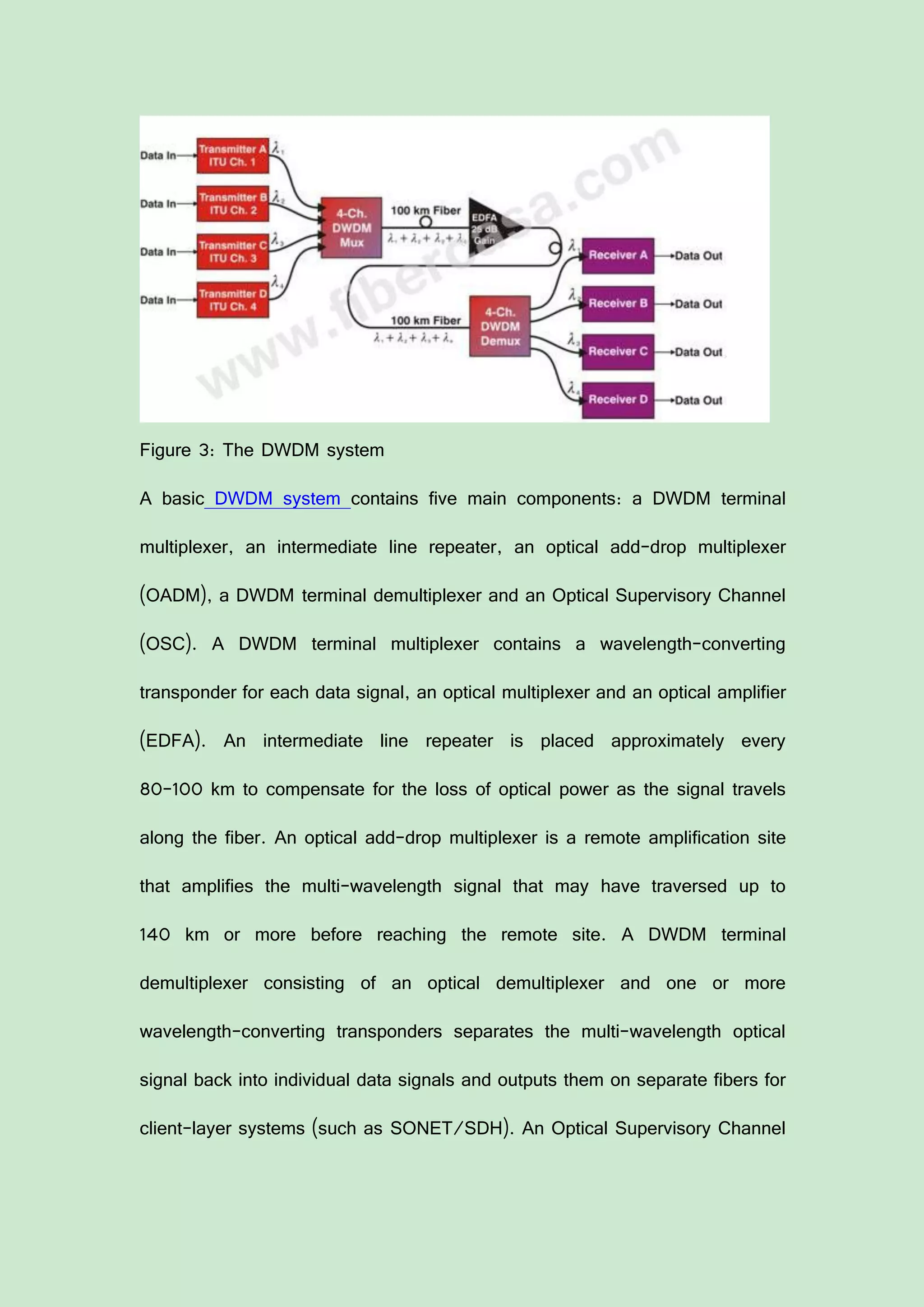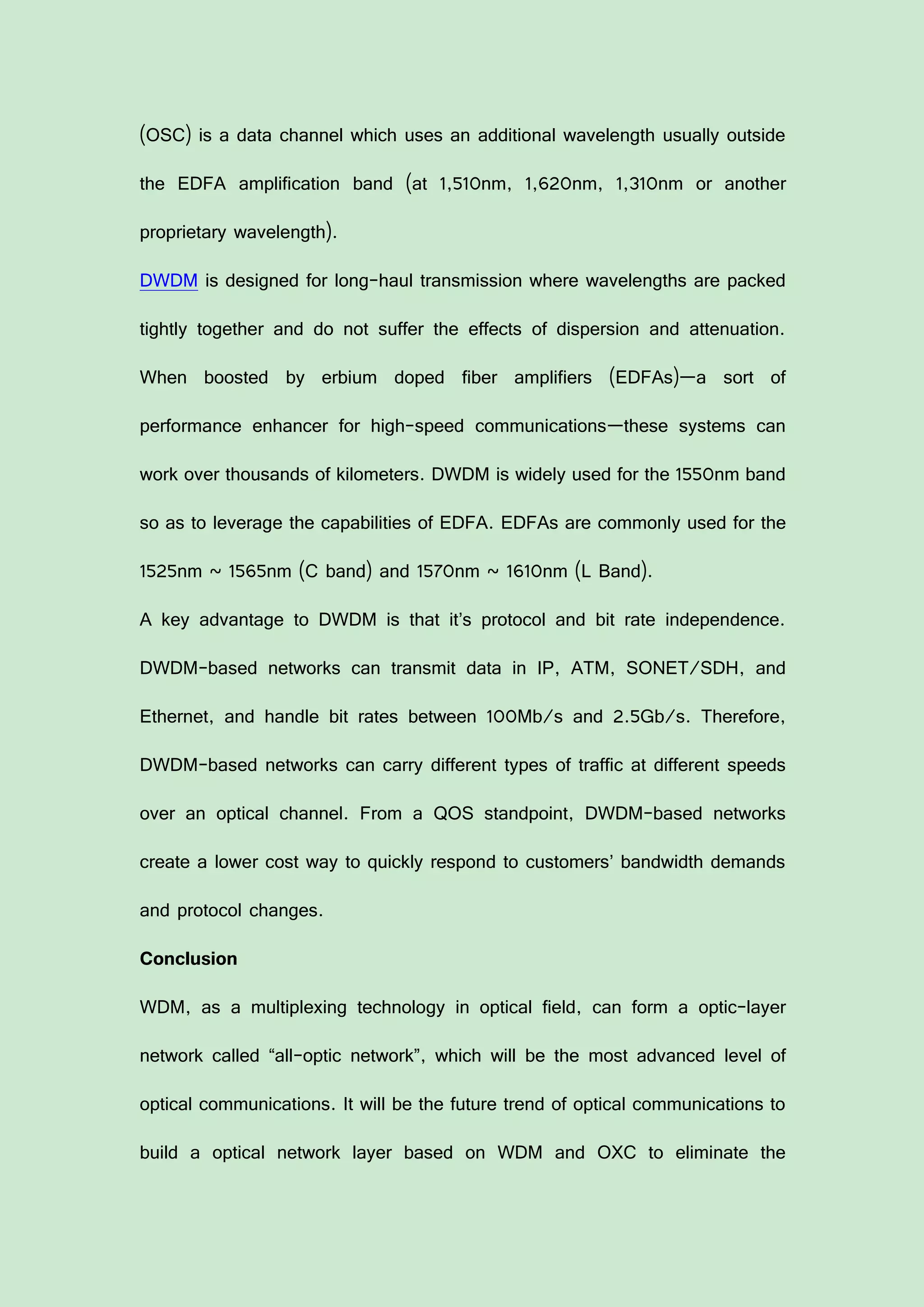WDM is a fiber optic technology that multiplexes multiple optical carrier signals onto a single optical fiber by using different wavelengths of laser light. This enables bidirectional communications over one fiber and increases network capacity. A WDM system uses a multiplexer to combine signals and a demultiplexer to separate them. CWDM and DWDM are two common types of WDM systems that differ in channel spacing and reach. CWDM uses wider spacing of 20nm between 1470-1610nm wavelengths, has a shorter reach of 100km, and is more cost-effective. DWDM more densely spaces narrow wavelengths, can reach thousands of kilometers with amplification, and supports higher speeds.
